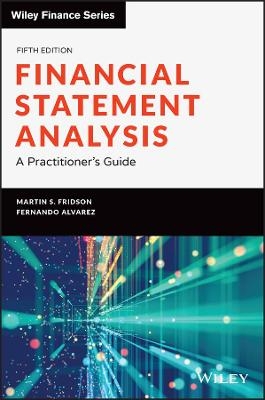
Financial Statement Analysis
John Wiley & Sons Inc (Verlag)
978-1-119-45714-5 (ISBN)
Understanding financial statements is an essential skill for business professionals and investors. Most books on the subject proceed from the questionable premise that companies' objective is to present a true picture of their financial condition. A safer assumption is that they seek to minimize the cost of raising capital by portraying themselves in the most favorable light possible. Financial Statement Analysis teaches readers the tricks that companies use to mislead, so readers can more clearly interpret statements.
Learn how to read and understand financial statements prepared according to GAAP and non-GAAP standards
Compare CFROI, EVA, Valens, and other non-GAAP methodologies to determine how accurate companies' reports are
Improve your business decision making, stock valuations, or merger and acquisition strategy
Develop the essential skill of quickly and accurately gathering and assessing information from financial statements of all types
Professional analysts, investors, and students will gain valuable knowledge from this updated edition of the popular guide. Filled with real-life examples and expert advice, Financial Statement Analysis, 5th Edition, will help you interpret and unpack financial statements.
MARTIN S. FRIDSON is Chief Investment Officer at Lehmann Livian Fridson Advisors, a New York-based investment management firm founded on fundamental security analysis. He is past President of the Fixed Income Analysts Society. FERNANDO ALVAREZ has been a faculty member at Babson College, Rutgers University School of Business, NYU-Stern, and Columbia Business School. His research interests include the interaction of strategy, financial statement analysis, valuation models, and stock market reactions to business decisions.
Preface to Fifth Edition xi
Acknowledgments xv
Part One
Reading Between the Lines 1
Chapter 1
The Adversarial Nature of Financial Reporting 3
The Purpose of Financial Reporting 4
The Flaws in the Reasoning 8
Small Profits and Big Baths 12
Maximizing Growth Expectations 13
Downplaying Contingencies 20
The Importance of Being Skeptical 23
Conclusion 27
Part Two
The Basic Financial Statements 31
Chapter 2
The Balance Sheet 33
The Value Problem 34
Comparability Problems in the Valuation of Financial Assets 36
Instantaneous Wipeout of Value 38
How Good Is Goodwill? 40
Losing Value the Old-Fashioned Way 44
True Equity Is Elusive 45
Book Value May Overstate Reality 46
Pros and Cons of a Market-Based Equity Figure 49
The Common Form Balance Sheet 51
Conclusion 53
Chapter 3
The Income Statement 55
Making the Numbers Talk 55
How Real Are the Numbers? 61
Conclusion 85
Chapter 4
The Statement of Cash Flows 87
The Cash Flow Statement and the Leveraged Buyout 89
Analytical Applications 95
In Defense of Slack 121
Conclusion 123
Part Three
A Closer Look at Profits 125
Chapter 5
What Is Profit? 127
Bona Fide Profits versus Accounting Profits 127
Which Costs Count? 130
Conclusion 134
Chapter 6
Revenue Recognition 135
Making It Up at Gowex 135
Globo’s Foreseen Fall from Grace 139
Channel-Stuffing in the Drug Business 143
A Second Take on Earnings 146
Making the Numbers at M/A-Com 149
Astray on Layaway 151
Recognizing Membership Fees 152
A Potpourri of Liberal Revenue Recognition Techniques 155
Fattening Earnings with Empty Calories 156
Tardy Disclosure at Halliburton 162
Managing Earnings with Rainy Day Reserves 165
Fudging the Numbers: A Systematic Problem 168
Conclusion 171
Chapter 7
Expense Recognition 173
Diamond Foods’s Movable Expenses 173
Nortel’s Deferred Profit Plan 176
Grasping for Earnings at General Motors 181
Time-Shifting at Freddie Mac 184
Conclusion 186
Chapter 8
The Applications and Limitations of EBITDA 187
EBIT, EBITDA, and Total Enterprise Value 188
The Role of EBITDA in Credit Analysis 193
Abusing EBITDA 196
A More Comprehensive Cash Flow Measure 198
Working Capital Adds Punch to Cash Flow Analysis 201
Conclusion 203
Chapter 9
The Reliability of Disclosure and Audits 205
Where Was the Cash? 206
Sloppiness Can Be a Red Flag 210
How Manipulation Evades Detection 214
Systematic Problems in Auditing 215
Conclusion 220
Chapter 10
Mergers-and-Acquisitions Accounting 221
Goodwill Goes Bad 223
Double Trouble 224
Conclusion 227
Chapter 11
Is Fraud Detectable? 229
Telltale Signs of Manipulation 230
Fraudsters Know Few Limits 233
Enron: A Media Sensation 233
HealthSouth’s Excruciating Ordeal 242
Milk and Other Liquid Assets 249
Trouble Was Brewing at Luckin 252
Conclusion 254
Part Four
Forecasts and Security Analysis 255
Chapter 12
Forecasting Financial Statements 257
A Typical One-Year Projection 257
Sensitivity Analysis with Projected Financial Statements 270
Projecting Financial Flexibility 276
Pro Forma Financial Statements 279
Multiyear Projections 285
Conclusion 299
Chapter 13
Credit Analysis 301
Balance Sheet Ratios 302
Income Statement Ratios 311
Statement of Cash Flows Ratios 316
Combination Ratios 318
Relating Ratios to Credit Risk 326
Conclusion 342
Chapter 14
Equity Analysis 343
The Dividend Discount Model 344
The Price-Earnings Ratio 350
The Du Pont Formula 360
Valuation through Restructuring Potential 364
Advanced Equity Analysis 370
Conclusion 373
Notes 375
Glossary 387
Further Reading 405
About the Authors 407
Index 409
| Erscheinungsdatum | 29.08.2019 |
|---|---|
| Reihe/Serie | Wiley Finance |
| Verlagsort | New York |
| Sprache | englisch |
| Maße | 163 x 231 mm |
| Gewicht | 635 g |
| Themenwelt | Wirtschaft ► Betriebswirtschaft / Management ► Rechnungswesen / Bilanzen |
| ISBN-10 | 1-119-45714-9 / 1119457149 |
| ISBN-13 | 978-1-119-45714-5 / 9781119457145 |
| Zustand | Neuware |
| Haben Sie eine Frage zum Produkt? |
aus dem Bereich


